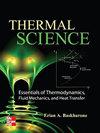基于热泵和可拆卸电池能量回收的电动汽车热管理系统
IF 1.1
4区 工程技术
Q4 THERMODYNAMICS
引用次数: 2
摘要
为了统一管理空调热系统、电池热系统和电机热系统,笔者提出了一种自行开发的电动汽车综合热管理系统,用于回收电池能量。首先,介绍了电动汽车发展中存在的问题和热管理系统的重要性,其次,分析了自主开发的热管理系统方案和各部分的工作原理,并介绍了焓差室热系统的实验结果。实验结果表明:在双蒸发系统下,当压缩机转速为4500 rpm时,最大COP为2.46,最大COP充注量为1180 g,最大换热能力为4819 W(风侧换热+水侧换热),蒸发温度为5.35?C,蒸发过热度为9.5?C,冷凝温度为59.3?C,过冷度为10.4?C,吸气压力为280kpa,排气压力为1694 kPa。综上所述,该热管理系统具有较大的节能效果,保证了电动汽车在冬季采暖条件下续航里程不会大幅衰减,满足舒适性要求。本文章由计算机程序翻译,如有差异,请以英文原文为准。
Heat management system of electric vehicle based on heat pump and energy recovery of removable battery
In order to manage the air-conditioning thermal system, battery thermal system and motor thermal system in a unified manner, the author proposes a self-developed integrated thermal management system for electric vehicles to recover battery energy. Firstly, the problems in the development of electric vehicles and the importance of thermal management system are introduced, secondly, the self-developed thermal management system scheme and the principle of each part are analyzed, the experimental results of thermal system in enthalpy difference chamber are also introduced. The experimental results show that: Under the double evaporation system, when the compressor speed is 4500 rpm, the maximum COP is 2.46, and the maximum COP charge is 1180 g, the maximum heat transfer capacity is 4819 W (wind side heat transfer + water side heat transfer), the evaporation temperature is 5.35?C, the evaporation superheat is 9.5?C, the condensation temperature is 59.3?C, the undercooling degree is 10.4?C, the suction pressure is 280 kPa, and the exhaust pressure is 1694 kPa. In conclusion, the thermal management system has great energy saving effect, which ensures that the electric vehicle range will not be greatly attenuated under winter heating conditions, and meets the requirements of comfort.
求助全文
通过发布文献求助,成功后即可免费获取论文全文。
去求助
来源期刊

Thermal Science
工程技术-热力学
CiteScore
2.70
自引率
29.40%
发文量
399
审稿时长
5 months
期刊介绍:
The main aims of Thermal Science
to publish papers giving results of the fundamental and applied research in different, but closely connected fields:
fluid mechanics (mainly turbulent flows), heat transfer, mass transfer, combustion and chemical processes
in single, and specifically in multi-phase and multi-component flows
in high-temperature chemically reacting flows
processes present in thermal engineering, energy generating or consuming equipment, process and chemical engineering equipment and devices, ecological engineering,
The important characteristic of the journal is the orientation to the fundamental results of the investigations of different physical and chemical processes, always jointly present in real conditions, and their mutual influence. To publish papers written by experts from different fields: mechanical engineering, chemical engineering, fluid dynamics, thermodynamics and related fields. To inform international scientific community about the recent, and most prominent fundamental results achieved in the South-East European region, and particularly in Serbia, and - vice versa - to inform the scientific community from South-East European Region about recent fundamental and applied scientific achievements in developed countries, serving as a basis for technology development. To achieve international standards of the published papers, by the engagement of experts from different countries in the International Advisory board.
 求助内容:
求助内容: 应助结果提醒方式:
应助结果提醒方式:


